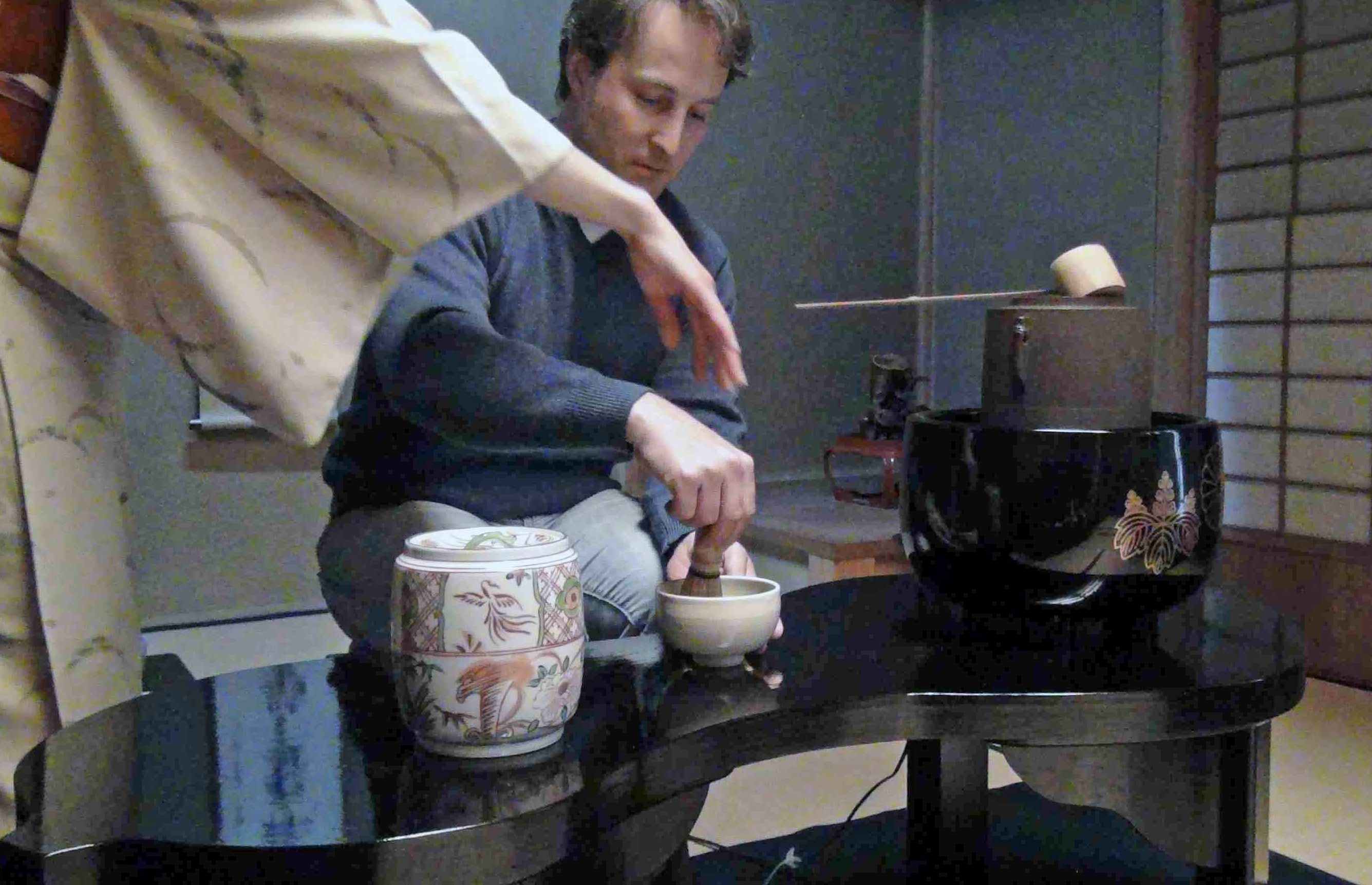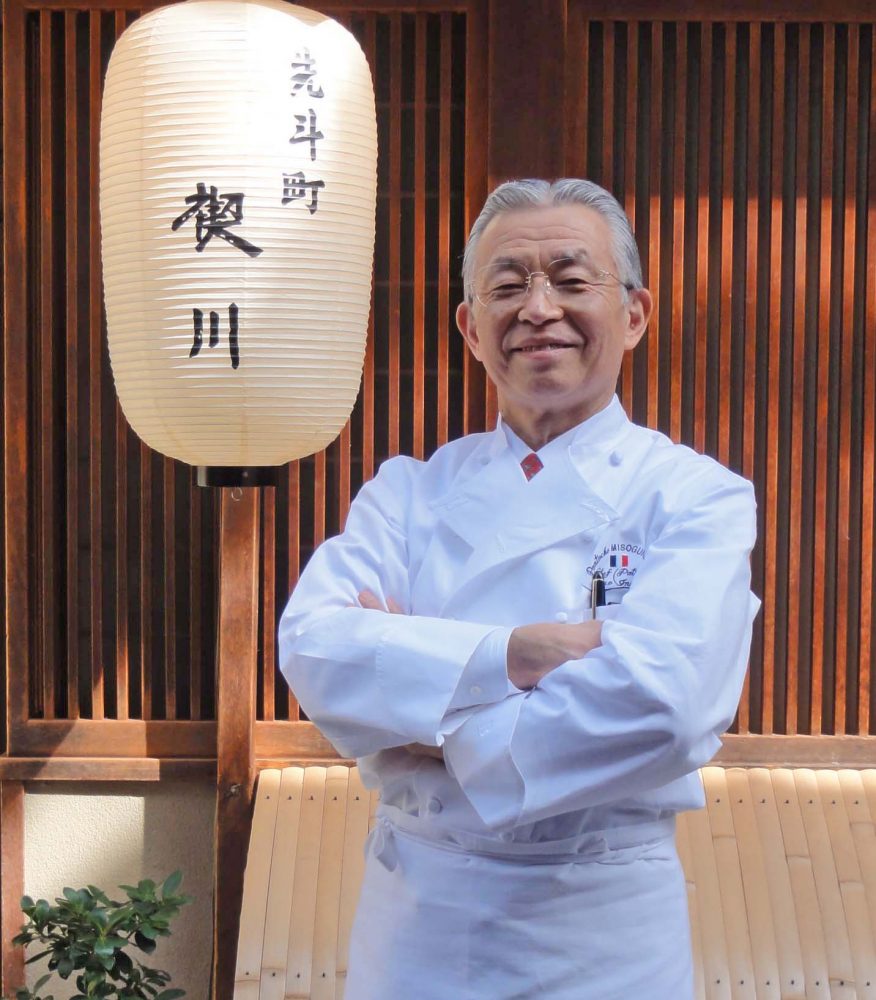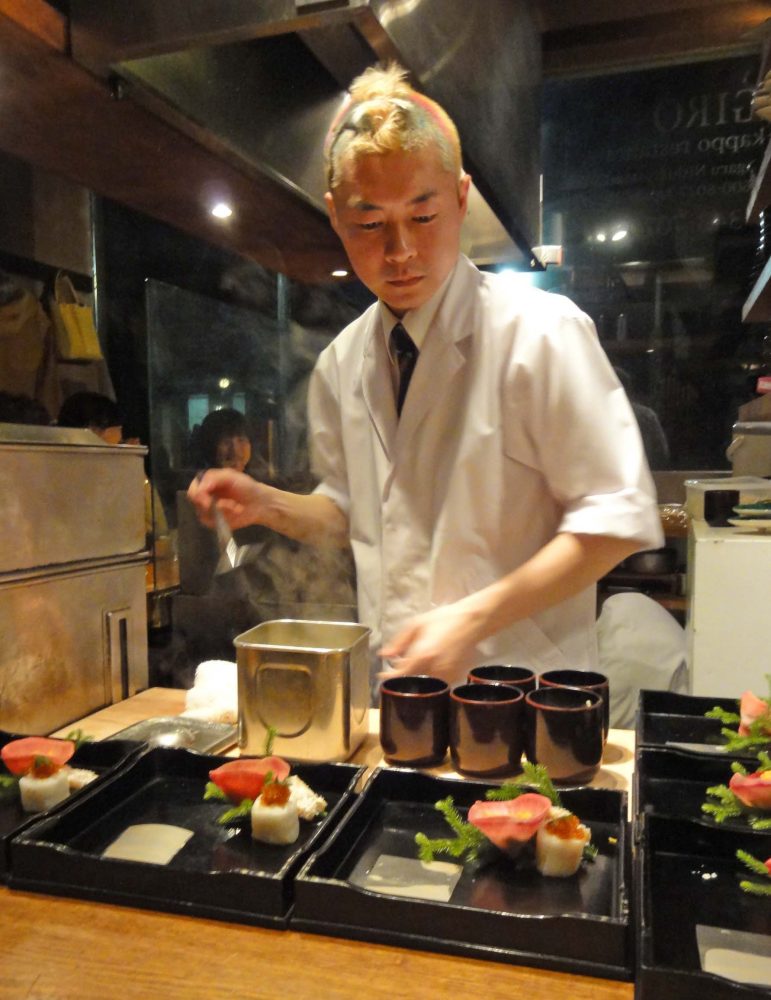Adam Waxman is an award winning travel journalist focusing on…
Looking out on the serenity of Kyoto City from the balcony of Kiyomizu Temple, we glimpse the first bud of spring. Breathing it in, the temple monk shares with me that, “when you look at a cherry blossom in full bloom, maybe you feel it is at the height of its beauty, but for Japanese, the moment it falls to the ground we feel beauty; we enjoy the entire flower, from its budding to its falling.”
In this ancient capital, home to 1,600 Buddhist temples and 400 Shinto shrines, simplicity and balance are conservatively entrenched in all aspects of art, philosophy and life and, yet, there is a new spring in the air. There is a growing trend of adapting ancient traditions for a modern and chic Japanese youth to reintroduce them to their own cultural heritage.
 To experience traditional Japanese arts we visit the Iori Machiya reclaimed town houses for various arts that we would otherwise miss. Flower arranging, tea ceremony and kyogen calligraphy are all offered, but alas we must choose. Outside, however, we see young women in kimono translating new looks. They incorporate lace, bright colours, patterned fabrics and one even flaunts a faux fur trim. Sassy ribbons, curls and decorative hairpins adorn their previously austere hairdos. There are even whispers of a rare instance of a blogging Maiko.
To experience traditional Japanese arts we visit the Iori Machiya reclaimed town houses for various arts that we would otherwise miss. Flower arranging, tea ceremony and kyogen calligraphy are all offered, but alas we must choose. Outside, however, we see young women in kimono translating new looks. They incorporate lace, bright colours, patterned fabrics and one even flaunts a faux fur trim. Sassy ribbons, curls and decorative hairpins adorn their previously austere hairdos. There are even whispers of a rare instance of a blogging Maiko.
 At the root of Japanese culture is the ancient tea ceremony whose purpose, like Zen meditation, is only to appreciate the moment of the experience. Simple and austere, its art, and the time involved, requires commitment. At Fukujuen, a multi-storied emporium devoted to introducing green tea, there are surprises on every floor. Kimono clad instructors teach the way of the tea ceremony in a traditional tearoom setting. The finest selections of Japanese ceramics for enjoying tea are sold. A French restaurant incorporates green tea in its menu. What beckons our attention though, is a 90-minute personal tea instruction that introduces us to the highest quality green tea in Kyoto. Here, we make our own unique blend. I prefer sweet notes, so our host carefully matches gyokuro and kabosecha for my perfect tea. The latest trend is green tea cafés, so before departing, we order matcha cake and a green tea latté in the café.
At the root of Japanese culture is the ancient tea ceremony whose purpose, like Zen meditation, is only to appreciate the moment of the experience. Simple and austere, its art, and the time involved, requires commitment. At Fukujuen, a multi-storied emporium devoted to introducing green tea, there are surprises on every floor. Kimono clad instructors teach the way of the tea ceremony in a traditional tearoom setting. The finest selections of Japanese ceramics for enjoying tea are sold. A French restaurant incorporates green tea in its menu. What beckons our attention though, is a 90-minute personal tea instruction that introduces us to the highest quality green tea in Kyoto. Here, we make our own unique blend. I prefer sweet notes, so our host carefully matches gyokuro and kabosecha for my perfect tea. The latest trend is green tea cafés, so before departing, we order matcha cake and a green tea latté in the café.
 Within the narrow labyrinth of Pontocho, we find the renowned Misoguigawa restaurant; slide open the door; remove our shoes and shuffle along the tatami to our seats. In this 100-year-old Japanese style house one might expect a traditional serving of tea followed by lacquered containers of pretty Kyoto ingredients. Surprise. A flute of champagne is followed by rich seared foie gras on a poached Fuji apple with grenadine syrup—served with chopsticks. This is “French Kaiseki”— classic French technique with a Japanese presentation—blending cultures, not ingredients, with the result being a heightened appreciation of both. Kaiseki ryori is cuisine rooted in the Zen traditions of the tea ceremony, and is meant to be an austere arrangement of artistically beautiful dishes reflecting seasonal and local ingredients. Chef Teruo Inoue delights in our enjoyment, and encourages us to use our spoons to enjoy the champagne sauce accompanying the scallops and freshly sliced black truffle. His rendition of delicate tilefish crusted in finely chopped mushroom and panko is brilliant. House-made chocolates and pastries beckon us to linger with an espresso. To leave even one morsel uneaten would be sinful.
Within the narrow labyrinth of Pontocho, we find the renowned Misoguigawa restaurant; slide open the door; remove our shoes and shuffle along the tatami to our seats. In this 100-year-old Japanese style house one might expect a traditional serving of tea followed by lacquered containers of pretty Kyoto ingredients. Surprise. A flute of champagne is followed by rich seared foie gras on a poached Fuji apple with grenadine syrup—served with chopsticks. This is “French Kaiseki”— classic French technique with a Japanese presentation—blending cultures, not ingredients, with the result being a heightened appreciation of both. Kaiseki ryori is cuisine rooted in the Zen traditions of the tea ceremony, and is meant to be an austere arrangement of artistically beautiful dishes reflecting seasonal and local ingredients. Chef Teruo Inoue delights in our enjoyment, and encourages us to use our spoons to enjoy the champagne sauce accompanying the scallops and freshly sliced black truffle. His rendition of delicate tilefish crusted in finely chopped mushroom and panko is brilliant. House-made chocolates and pastries beckon us to linger with an espresso. To leave even one morsel uneaten would be sinful.
 Much like the packaging of a Japanese gift, or an elegant box in which a kaiseki dinner is revealed, curtains shroud restaurant fronts to create allure. Curious, we enter Giro Giro Hitoshina’s kappo-style dining, where we are face-to-face with the chef from across the kitchen counter. Originating from the medieval samurai, there is an immediacy, intimacy and visual appreciation to this culinary style through which we can have conversation with the chef throughout the meal. We sip plum wine and marvel at the imagination and delicate precision of en vogue hairstylist-turned-chef Fémio. His menu reflects his own personal style that leaps over the counter to the forefront of taking the concept of kaiseki and making it more accessible.
Much like the packaging of a Japanese gift, or an elegant box in which a kaiseki dinner is revealed, curtains shroud restaurant fronts to create allure. Curious, we enter Giro Giro Hitoshina’s kappo-style dining, where we are face-to-face with the chef from across the kitchen counter. Originating from the medieval samurai, there is an immediacy, intimacy and visual appreciation to this culinary style through which we can have conversation with the chef throughout the meal. We sip plum wine and marvel at the imagination and delicate precision of en vogue hairstylist-turned-chef Fémio. His menu reflects his own personal style that leaps over the counter to the forefront of taking the concept of kaiseki and making it more accessible.
 This is Japanese, Chinese and French fusion, and unlike traditional kaiseki, where we admire the culinary arrangement, here we’re watching performance art. For Fémio, the joy is in demonstrating what he likes to do in front of his customers, and their subsequent surprise at what they’ve never seen or tasted before. His presentation of shrimp, squid and sea cucumber with fried gingko nuts, cod fish roe, plum jelly and cherry blossom is a dazzling display of colour and taste. He has perfected the art of surprise by concealing ingredients within ingredients. But let us not forget the libations. While sake is a fixture on Japanese menus, sparkling sake is the big splash. Kanpai!
This is Japanese, Chinese and French fusion, and unlike traditional kaiseki, where we admire the culinary arrangement, here we’re watching performance art. For Fémio, the joy is in demonstrating what he likes to do in front of his customers, and their subsequent surprise at what they’ve never seen or tasted before. His presentation of shrimp, squid and sea cucumber with fried gingko nuts, cod fish roe, plum jelly and cherry blossom is a dazzling display of colour and taste. He has perfected the art of surprise by concealing ingredients within ingredients. But let us not forget the libations. While sake is a fixture on Japanese menus, sparkling sake is the big splash. Kanpai!
Read more:
Adam Waxman is an award winning travel journalist focusing on food, wine and well being. As well as an actor in film, television and formerly, the Stratford Festival, he is the Publisher of DINE and Destinations magazine.



